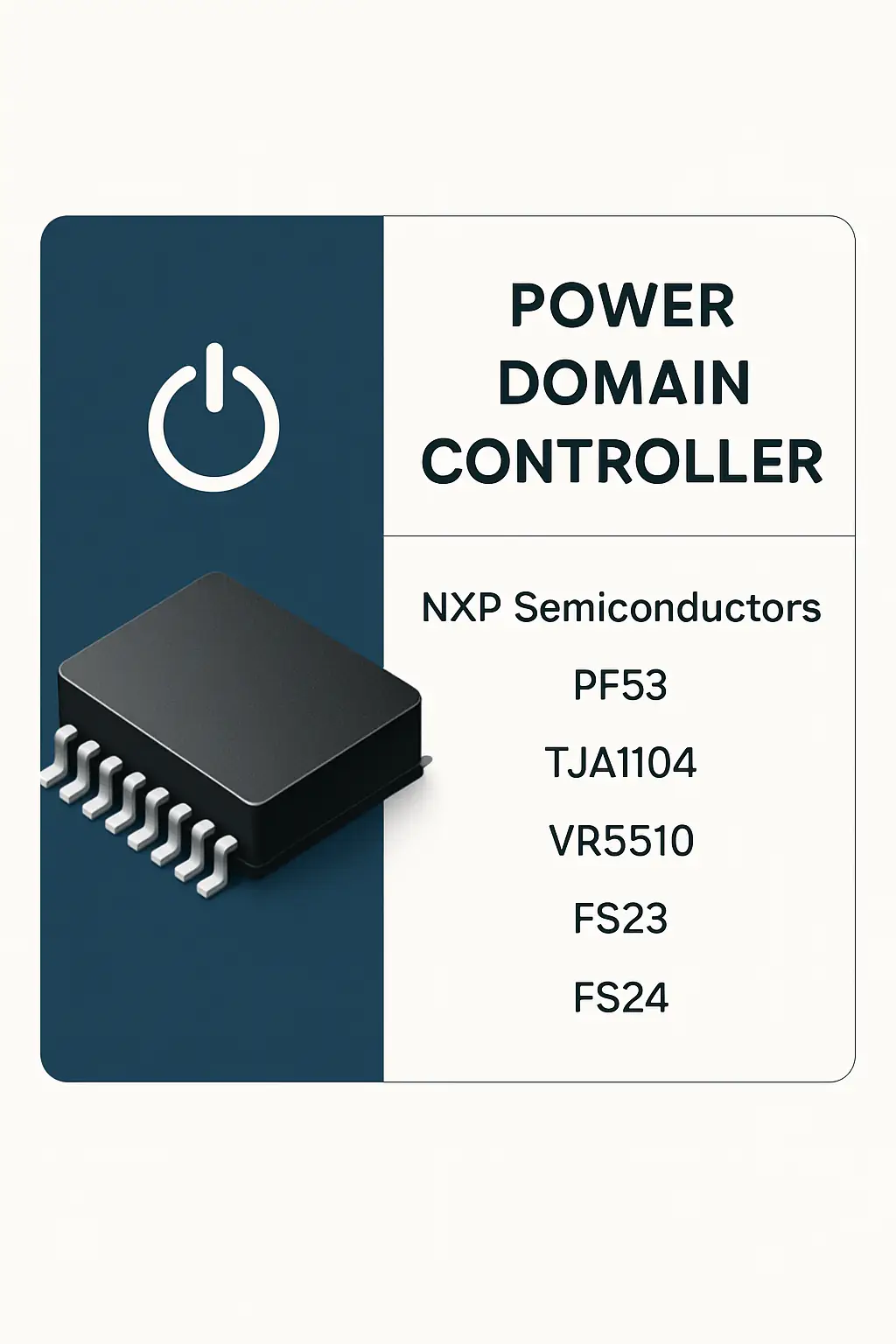Power Domain Controller
A Power Domain Controller (PDC) is a critical component in modern automotive electronics systems, responsible for managing and distributing electrical power to various vehicle subsystems. It plays a key role in ensuring efficient power management, enhancing system reliability, and supporting advanced vehicle functions. Integrated within the broader framework of zonal and domain controllers, the PDC operates as part of the vehicle's electrical architecture, optimizing energy usage and improving overall performance.
The primary function of a Power Domain Controller is to monitor and control power distribution across different vehicle domains, such as lighting, climate control, and comfort systems. It enables precise control over power flow, reducing energy waste and improving system efficiency. Additionally, it supports fault detection and isolation, enhancing vehicle safety and diagnostics.
Power Domain Controllers are widely used in electric and hybrid vehicles, where efficient power management is crucial. They are also essential in high-end passenger cars, commercial vehicles, and autonomous driving systems, where reliable and intelligent power distribution is required. By integrating with other vehicle systems, the PDC contributes to a more connected and responsive driving experience.
Designed for scalability and flexibility, the Power Domain Controller supports evolving vehicle architectures and software-defined features. Its implementation helps reduce wiring complexity, lower costs, and improve system integration. As the automotive industry moves toward smarter and more connected vehicles, the Power Domain Controller remains a vital component in achieving advanced power management solutions.
Details
Power Domain Controller

Related Parts
| Series Name | Description | Manufacturer Name | Attribute Description |
|---|---|---|---|
| NXP Semiconductors | Voltage: 3.3V; Current: 500mA; Package: SOT-23; Operating Temp: -40°C to +125°C; Low dropout regulator; Fixed output; High PSRR; Enable function; Thermal protection. | ||
| NXP Semiconductors | 24 V automotive-grade high-speed CAN transceiver with integrated 5 V supply, low-power mode, and excellent EMC performance for reliable communication in harsh environments. | ||
| NXP Semiconductors | Input voltage: 2.3V to 5.5V; Output current: up to 1.5A; Dropout voltage: 180mV at 1A; Operating temperature: -40°C to +125°C; Low quiescent current: 75μA. | ||
| NXP Semiconductors | Operating voltage: 1.62V to 3.6V; Standby current: 0.5µA; Operating temperature: -40°C to +85°C; Interface: I2C; Data rate: up to 400 kbps; Memory size: 2 Kbit. | ||
| NXP Semiconductors | Operating Voltage: 1.62V to 3.6V, Standby Current: 0.1μA, Data Rate: up to 1Mbps, Interface: SPI/I2C, Memory Size: 256-bit EEPROM, Temperature Range: -40°C to +85°C, Package: SOT23-6. | ||
| NXP Semiconductors | 32-bit ARM Cortex-M4F core, up to 112 MHz, 512 KB flash, 64 KB SRAM, CAN FD, LIN, SPI, I2C, 12-bit ADC, -40°C to 125°C, 64-pin LQFP package. | ||
| NXP Semiconductors | 32-bit Arm Cortex-M7/M4 cores, up to 240 MHz, 3.0–5.5V operation, embedded flash & SRAM, CAN FD, LIN, SPI, I2C, 12-bit ADC, DSPI, FlexIO, safety & security features, AEC-Q100 qualified. | ||
| NXP Semiconductors | 32-bit ARM Cortex-M core, up to 180 MHz, 2 MB Flash, 256 KB RAM, 12-bit ADC, CAN FD, Ethernet, USB, LIN, SPI, I2C, PWM, -40°C to 125°C operating temperature, 100-pin LQFP package. | ||
| NXP Semiconductors | 3.3V CAN FD controller, up to 8 Mbps, integrated 120Ω termination, -40°C to +125°C operating temperature, 16-pin SOIC package, low-power mode, high EMC performance. |








.png?x-oss-process=image/format,webp/resize,h_32)










